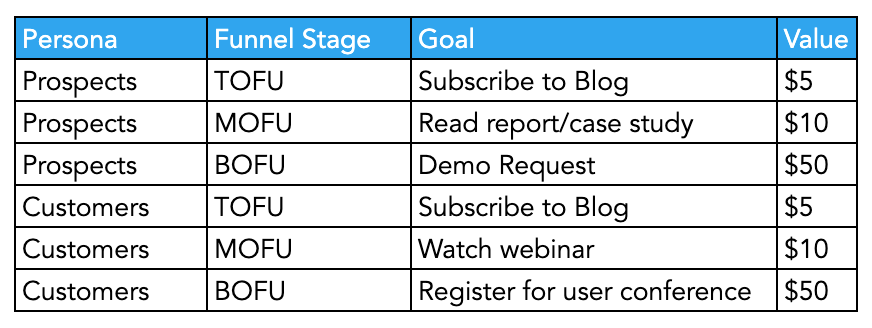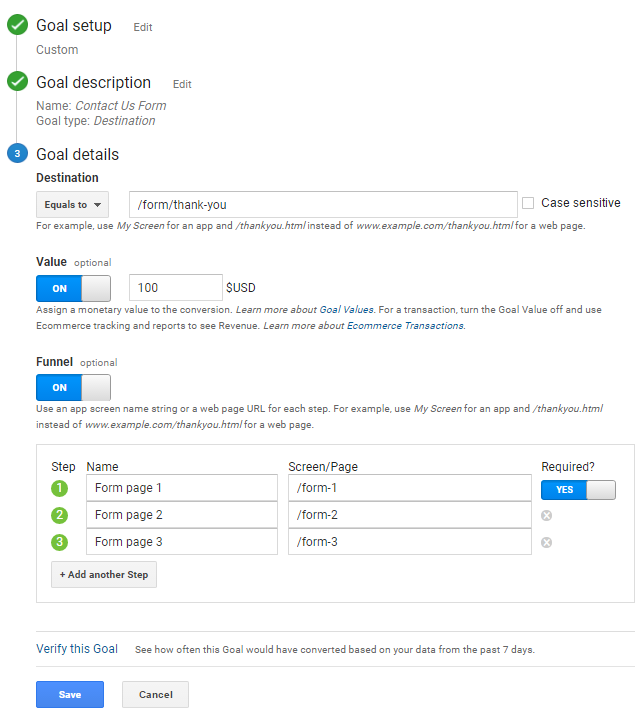Find Out What Data Is Google Analytics Goals Unable to Track
Find Out What Data Is Google Analytics Goals Unable to Track
Blog Article
Discover the Limitations of Google Analytics Goals: Unveiling the Data Types That Remain Untrackable
As services increasingly depend on data-driven decision-making, recognizing the limitations of tools like Google Analytics comes to be paramount. While Google Analytics Goals deal beneficial insights into user communications, there exist information kinds that elude tracking, posturing difficulties to a comprehensive understanding of customer behavior.
Incomplete Customer Trip Tracking
Insufficient individual trip monitoring within Google Analytics can prevent the ability to accurately assess user behavior. When the user trip is not totally tracked, there are gaps in the information that protect against an extensive understanding of just how users interact with a web site. This absence of understanding can cause missed out on chances for optimization and enhancements to the individual experience.
One typical problem with incomplete user journey tracking is the lack of ability to see the full path that users take previously completing a goal or leaving the site. Without this information, it is testing to recognize where customers might be running into barriers or rubbing points that prevent them from transforming. In addition, insufficient tracking can obscure the influence of particular advertising and marketing initiatives or internet site modifications on individual behavior.
To address this constraint, it is crucial to set up proper tracking mechanisms within Google Analytics to capture the entire customer trip. This may include establishing occasion monitoring, objective funnels, or using devices like Google Tag Supervisor to guarantee that no important communications go unrecorded. By getting an extensive view of the customer journey, site proprietors can make more informed choices to boost individual interaction and drive conversions.
Attribution Challenges
Browsing with acknowledgment obstacles in Google Analytics requires a complete understanding of how various touchpoints contribute to the general conversion procedure. Attribution obstacles occur from the intricacy of modern consumer trips, where individuals engage with numerous channels before transforming. Google Analytics offers different acknowledgment models like very first touch, last touch, and linear, each providing a various perspective on how credit score is designated to touchpoints along the conversion course. However, these designs might not always properly mirror real impact of each touchpoint on the conversion.
One usual attribution challenge is the trouble in associating conversions to the appropriate resource, particularly in instances where individuals communicate with multiple networks prior to converting. Additionally, cross-device monitoring poses one more attribution obstacle, as users frequently switch over between tools during their trip, making it challenging to track their communications effortlessly.
Offline Conversions
Given the obstacles connected with associating conversions accurately in online networks, the dimension of offline conversions presents a considerable chance for marketing professionals looking for a much more extensive understanding of their clients' journey. Offline conversions refer to activities that consumers take in the physical globe, such as making acquisitions in brick-and-mortar stores or over the phone, going to occasions, or engaging with printed materials - what data is google analytics goals unable to track. These conversions are important for companies that run both online and offline, as they supply useful understandings right into the effectiveness of advertising and marketing projects across various touchpoints
Tracking offline conversions typically presented a substantial obstacle for marketing experts, as it was testing to connect these activities back to particular online interactions properly. However, with improvements in modern technology, such as the combination of CRM systems, one-of-a-kind identifiers, and coupon codes, companies can now link the gap between online and offline information to acquire a much more all natural sight of client actions. By efficiently determining offline conversions, marketers can maximize their strategies, assign resources more successfully, and eventually improve the overall consumer experience.
Cross-Device Monitoring
Cross-device monitoring plays a critical function in recognizing the interconnected nature of consumers' electronic communications throughout several tools. In today's omnichannel globe, where users seamlessly switch over between smartphones, tablet computers, and desktops, tracking their actions across these tools is essential for online marketers to obtain a detailed view of their consumer journey.

In addition, privacy concerns and laws such as GDPR and CCPA have even more challenging cross-device monitoring. With customers requiring even more control over their information and boosted constraints on monitoring modern technologies, online marketers need to locate innovative and privacy-compliant means to attach customer communications across gadgets.
Dynamic Web Content Engagement
Recognizing customer involvement with vibrant content is pivotal in enhancing electronic advertising and marketing techniques for improved audience interaction. Dynamic content refers to website elements that alter based on user behavior, choices, or various other aspects, supplying a personalized experience. Nevertheless, tracking user communications with vibrant material positions challenges for typical analytics devices like Google Analytics.
While Google Analytics can track basic interactions like clicks and page sights, it might battle to capture even more nuanced interactions within dynamic web content. what data is google analytics goals unable to track. Metrics such as time invested on particular dynamic aspects, hover activities, or interactions within pop-ups are commonly not quickly quantifiable utilizing conventional tracking methods. This limitation prevents marketing experts' ability to totally grasp how individuals are engaging with vibrant web content and tailor their methods appropriately

Final Thought
To conclude, Google Analytics goals have constraints in tracking incomplete user trips, associating conversions properly, recording offline conversions, tracking cross-device interactions, and determining vibrant content involvement. These restrictions click over here now highlight the importance of discovering additional tracking approaches and tools to obtain a more extensive understanding of customer actions and conversions past what Google Analytics can give.
While Google Analytics Goals deal beneficial understandings right into individual interactions, there exist data types that thwart monitoring, posturing obstacles to an extensive understanding of user behavior.Incomplete customer journey tracking within Google Analytics can hinder the ability to precisely analyze user actions. When the individual journey is not totally tracked, there are gaps in the data that avoid a detailed understanding of exactly how users interact with a website.One usual problem with incomplete user trip tracking is the lack of ability to see the full path that customers take previously completing right here an objective or leaving the site. By gaining a comprehensive sight of the individual trip, web site owners can make even more educated decisions to enhance customer involvement and drive conversions.
Report this page